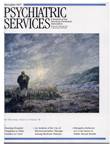The Dissociative Child: Diagnosis, Treatment, and Management
This book takes multiple personality and dissociative phenomena from the realm of myth and fantasy into the objective light of clinical observation and scientific study. Multiple personality first found its place in psychiatric taxonomy in DSM-III in 1980, became multiple personality disorder in DSM-III-R, and then emerged as dissociative identity disorder, with specific criteria, in DSM-IV. Although dissociative identity disorder does not appear as a distinct disorder in the section of DSM-IV termed disorders usually first diagnosed in childhood and adolescence, this book emphasizes that dissociative disorder "begins in childhood in an individual who has the propensity to dissociate, who is exposed to trauma, in an environment that cannot absorb the trauma, and who over time develops parts of the mind that consider themselves separate and distinct from the rest of the mind."
Thus early identification of dissociative phenomena in childhood and in adolescence becomes a fertile area not only for unearthing the origins of the disorder but for offering treatment that is more rapid and successful in childhood than is possible in the fully formed multiple personality in adults. This book brings together clinical findings, diagnostic problems, and therapeutic techniques in evaluating and treating such children. It is capably edited by Joyanna Silberg, herself an author or coauthor of six of the 15 chapters and senior psychologist at the Sheppard Pratt Health System. She has assembled a galaxy of clinicians concerned and experienced with children and adolescents who are plagued with dissociative symptoms.
Children, in contrast to adults, may not have the fully developed alter ego, split off from consciousness, with its own "enduring pattern of perceiving, relating to, and thinking about the environment and recurrently taking control of the person's behavior" (DSM-IV criteria). However, they do have an elaborate inner fantasy world peopled with characters that help them cope with severe trauma, and they do have a constellation of symptoms and responses that offer clues to their inner experience. These inner feelings and fantasies are well described and discussed in the early chapters of this book and are summarized by Joyanna Silberg as behavior variables and marker variables.
The behaviors include episodes of amnesia (denial of knowledge of just-stated questions or instructions, denial of familiarity with known people or objects); staring episodes (trancelike states, shifts in consciousness); odd repetitive movements; behavioral fluctuations, particularly in language, which may shift abruptly from one age level to another, often dramatically out of context; affective reactivity; shifting somatic complaints; and what Silberg calls internal dividedness, in which the child refers to other selves or other voices within, suggesting evidence of internal conflict.
Marker variables, as seen in a variety of tests such as the Thematic Apperception Test or the Rorschach, drawings, and sentence completions, include multiplicity of images that should be single, dissociative coping (attempts to cope with traumatic events through fantasy, wishing, pretending, sleeping, or forgetting), malevolent religiosity (references to Satan, witches, or devils), emotional confusion, extreme categories (figures portraying extreme goodness or badness), violent imagery, magical transformation, and depersonalized images.
All these features depict the child's dissociative struggle to cope with trauma. Structured interviews to uncover these symptoms and defense patterns have been developed. A Dissociative Features Profile is reported to select 93 percent of a dissociative target group. An Imaginary Friends Questionnaire and an Adolescent Dissociative Experience Scale are also reproduced in an appendix.
In this section…
Highlights this month are reviews of three first-person accounts—of a man's perilous relation with alcohol, of a father's experiences in a 25-year search for successful treatment for his son's schizophrenia, and of a woman who grew up with two older mentally ill siblings. Archie A. Silver writes on the dissociative child, and Aaron E. Black on trauma and dreams and betrayal trauma. Other books in the section offer a history of psychiatry and, through interviews, a history of psychopharmacology. And much more.
This book emphasizes that the symptoms described are among the sequelae of early childhood trauma, including physical and sexual abuse. However, stressful events, acute or chronic or both, are normally dealt with by using whatever defenses are available to reduce anxiety and feelings of personality fragmentation. Thus many of the symptoms subsumed as dissociative are not diagnostically specific for dissociative identity disorder and may be found in posttraumatic stress disorder, petit mal (trance-like states), depression with suicidal thoughts or even attempts, phobias, eating disorders, impulse control disorders, sexual dysfunctions, schizophrenia, or borderline personality disorder or in children reared in chaotic, abusive, or violent environments.
Further, dissociative phenomena may appear in the normal maturation process as transient phenomena, as, for example, imaginary companions of the early-school-age child, or the preschool child who stares off into space or falls asleep in response to stress. Even an introjected voice as a voice of conscience or of a parent, or as an embodiment of the good or the bad part of the child, may be recognized as such by the latency-age child. Just what vulnerability in a child, or what constellation of stressors, makes the introjection take control and even take on a life of its own, what makes the imaginary companion become real and govern parts of the life of the child, is the fascinating question not answered by this book.
It is enough that The Dissociative Child does describe a clinical entity, offering vivid clinical vignettes, formulating its genesis in a world "shattered through many modalities of experience," coming to grips with problems of differential diagnosis, and offering clues for prognosis and descriptions of varied treatment modalities. The chapters fit together into a coherent whole; they offer the knowledge of experts and are tightly and clearly written. This is a book that sets the reader thinking about the capacity of the human organism to deal with stress and the many ways we can do so. It is destined to become a classic.
Dr. Silver is professor and director of child and adolescent psychiatry at the University of South Florida College of Medicine in Tampa.



